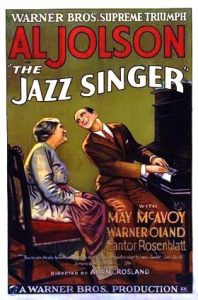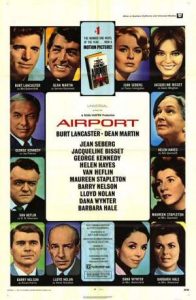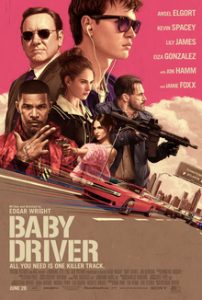Cinema has become a big iconic part of our culture. Thus, film posters have also become iconic. Movie posters are a big part of how the studios and filmmakers sell us on seeing their movie, they’re often one of the first things we associate with films.
Film posters have also become a popular collectors items over the years, whether its iconic posters or personal favorites. Some poster designers have even become notable in history for their work.
Early film posters typically featured The film title along with an artist’s rendering of an intriguing scene from the film, there usually no emphasis on the actors in the film. In the 1920’s film stars started to gain more recognition especially as film transitioned from silent to talking pictures. Film posters began highlighting the names of film stars and their images more prominently. At this time film posters also begin to foray into including more text than just the film’s title. Early tagline text often tried to link the film to a novel it was based on, or to highlight the writer, director or producer of the film (especially if the were renown).
Artist rendered (often drawn at the time) montages are the most prominent trend in film poster in the 1930’s- 1960’s. Drawings of various usually separate characters, scenes or moments from the film combined into one poster. This Allows the poster to appeal to the audience in several ways. Montage allowed posters the feature film stars while teasing out many of the elements contained in the film (a poster could display action and romance as well as stars among other elements). Logos is a big concept that montage posters used. Their logic is that the more things in the movies that they show you on the poster, the more reasons you’ll have to see it (or the more elements in the poster means more chances one will stick in someone’s head enough to make them want to see the film.)
Another trendy techniques at the time was rather than using a rendered montage to display a film’s aspects was to incorporate many aspects into one artist rendered image, an “epic shot” if you will. This technique attempts to drum up interest in a similar way to montage by communicating much information in one continuos shot/setting, promising intrigue to the viewer.
In the mid to late 1920’s film stars began to be more prominently featured on posters. Their faces and names were often a recurring element of the posters design.

“The Jazz Singer” is an early example of actor branding.
Capitalizing on the kariotic moment of a movies star’s power existed before and is still practiced today, but the trend escalated in the 40’s into the 50’s. At that time the trend was to feature the actors’ names in large letters (in some cases larger than the title), and featuring large images of their faces.
Another technique that capitalized on the fame of movie stars is to have a poster featuring (almost exclusively) the cast. This was often done for ensemble films which feature multiple notable actors.

“Airport” might be the epitome of ensemble featuring posters.
It’s a trend that is still frequently used today. A modern trend within the technique is to have “character posters”, several different posters each featuring its own character (very popular in the superhero genre)
Incorporation of still photographs (usually from the content of the film) can be seen in posters as far back as the late 30’s,but they were a rarity. Older posters that feature photographs are usually far less complex in design than artist rendered montages and epic shots. This may have been in large part due to lack of technological advancements with graphic design.
Use of still photos in posters become more common starting the the late 60’s into the 70’s. In the 70’s montage was still plentiful, but the trend of communicating mass information about the film in the poster began to reverse. Simpler designs often with just a single still photo become popular. The “less is more” approach often included designs that featured no actors images (but would often still include names). These posters aimed to be mysterious. Instead of promising elements that would be in the film, they would aim interest the audience by piquing the audience’s curiosity.
The rise of popularity in using photos lead to new versions of montage. Film posters began using photos in montage more often that rendered montage posters. Some of this is likely due to technological advances, and perhaps a heightened focus on realism as an appeal.
One of the more modern trends is expository posters. These posters (that became popular in the late 90’s/early 00’s) features stills not from the actually film (usually taken for promotional purposes) often with a white background that dole out expository story details from the film. They don’t give out as many promises as montage posters, but they introduce the film’s concept in a much more direct and obvious way than the “less is more” style posters do. They’re somewhat of a hybrid of the “montage” and “less is more” approaches. These are very popular today as are character posters/cast features and photo montages. Artist rendered posters started dying out in the 80’s but some modern film posters do use them when going for a nostalgic and retro effect, employing pathos as a concept to appeal emotionally to the audience.

the “Baby Driver” poster has a throwback vibe
Hey Jacob! I never really noticed the fact that prior to the popularization of cinema in the early 1900’s, movie posters didn’t really focus on the actors. Good job noticing the shift in movie poster designs. With the celebration actors also came the rise of the writers which makes sense why they started to include them on posters as well.